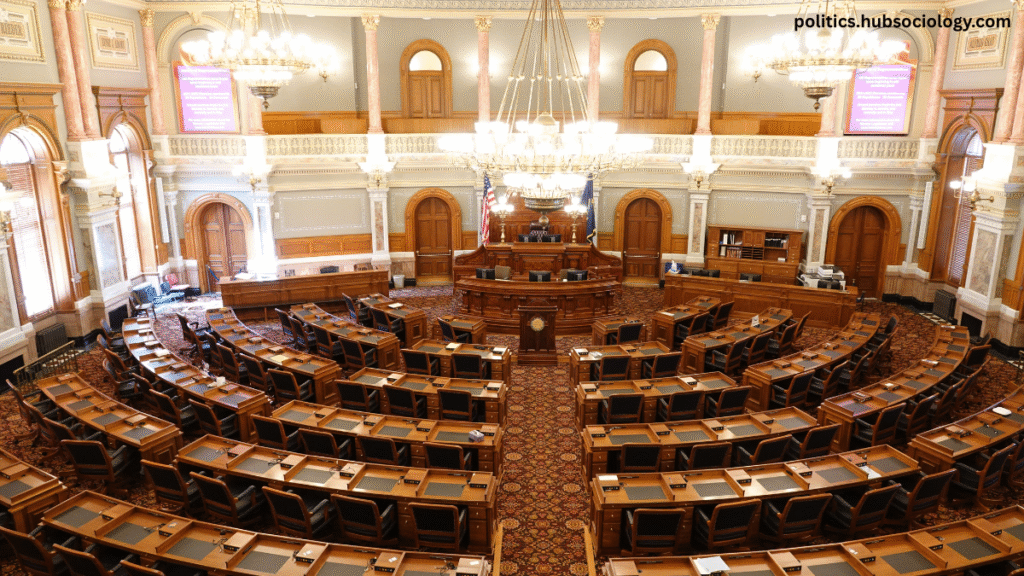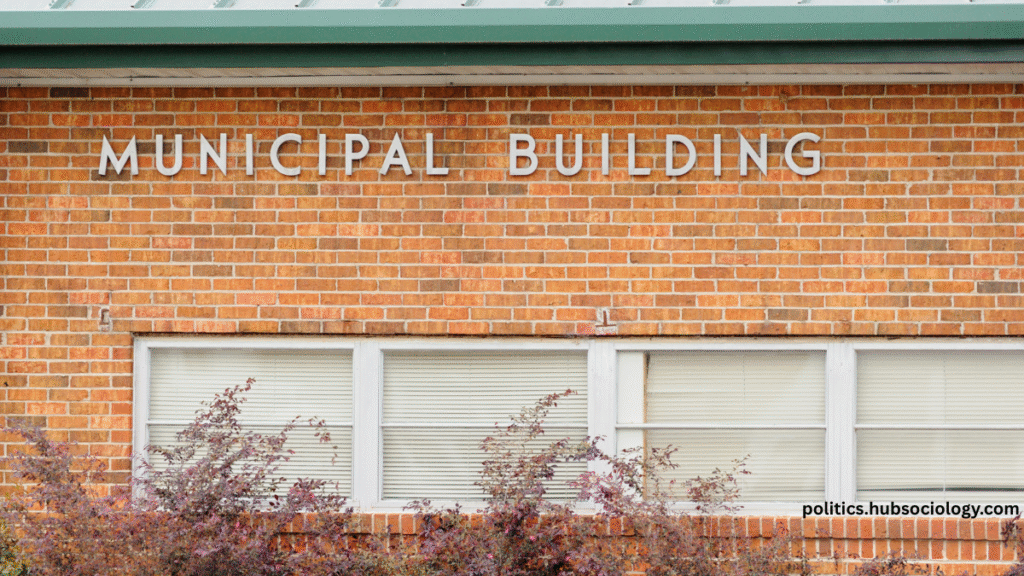Introduction
Governments are structured in various ways to effectively administer laws, policies, and public services. Two critical levels of government in many countries—particularly those with federal systems—are the federal (national) government and local government. While both play essential roles in governance, they differ significantly in their scope, responsibilities, and authority. Understanding these differences is crucial in political science, as it helps explain how power is distributed, how policies are implemented, and how citizens engage with their leaders.
This article explores the key distinctions between federal and local governments, their respective roles, and how they interact within a political system.

Table of Contents
1. Definition and Structure
Federal Government
A federal government is the national authority that governs an entire country. It operates under a federal system, where power is constitutionally divided between the central government and regional entities (such as states or provinces). Examples of countries with federal systems include the United States, Canada, Germany, and Australia.
Key Features:
- Sovereignty: The federal government holds supreme authority over national defense, foreign policy, and interstate matters.
- Bicameral Legislature: Many federal systems have two legislative chambers (e.g., the U.S. Congress with the House of Representatives and the Senate) to balance regional and population-based representation.
- Constitutional Authority: Its powers are defined and limited by a constitution, which also outlines shared or reserved powers for lower levels of government.
Local Government
Local governments operate at the municipal or county level and are responsible for administering services within smaller jurisdictions, such as cities, towns, and villages. They derive their authority from state or federal constitutions but have limited autonomy compared to the federal government.
Key Features:
- Decentralized Administration: Local governments handle day-to-day governance, such as public schools, waste management, and local law enforcement.
- Elected Councils or Mayors: Leadership is often composed of elected officials like mayors, city councils, or county commissioners.
- Limited Jurisdiction: Their powers are restricted to their geographic boundaries and subject to higher government regulations.

2. Key Differences Between Federal and Local Government
A. Scope of Authority
- Federal Government:
- Manages national and international affairs (e.g., defense, treaties, immigration).
- Regulates interstate commerce and currency.
- Can override state/local laws if they conflict with federal statutes (e.g., U.S. Supremacy Clause).
- Local Government:
- Focuses on community-specific needs (e.g., zoning laws, local roads, public parks).
- Cannot contradict federal or state laws.
- Operates under delegated powers from higher government levels.
B. Revenue and Budgeting
- Federal Government:
- Collects taxes (income tax, corporate tax) and controls national spending.
- Funds major programs like Social Security, military, and healthcare (e.g., Medicare in the U.S.).
- Can run deficits and borrow money through bonds.
- Local Government:
- Relies on property taxes, sales taxes, and federal/state grants.
- Budgets are smaller and must often be balanced (no deficit spending allowed in many cases).
- Funds local infrastructure, schools, and emergency services.
C. Legislative and Executive Functions
- Federal Government:
- Enacts laws applicable nationwide (e.g., Civil Rights Act, tax codes).
- The executive branch (president or prime minister) implements policies.
- The judiciary (e.g., Supreme Court) interprets laws and resolves disputes between states.
- Local Government:
- Passes ordinances (local laws) on issues like noise control, parking, and business licenses.
- Mayors or city managers oversee administration.
- Local courts handle minor legal disputes and municipal violations.
D. Representation and Democracy
- Federal Government:
- Representatives (senators, congress members) are elected based on population or regional equality.
- Decisions impact the entire nation, requiring broad consensus.
- Local Government:
- Council members or commissioners are directly elected by residents.
- More accessible to citizens, allowing for greater participation in town halls and local elections.
3. Roles and Responsibilities
Federal Government Responsibilities
- National Security & Defense: Maintains armed forces and conducts foreign diplomacy.
- Economic Regulation: Controls monetary policy, trade agreements, and interstate commerce.
- Civil Rights Protection: Enforces constitutional rights and anti-discrimination laws.
- Major Infrastructure Projects: Funds highways, airports, and national research initiatives.
- Social Welfare Programs: Administers Medicare, Social Security, and federal education grants.
Local Government Responsibilities
- Public Services: Manages police, fire departments, and emergency medical services.
- Education: Oversees public schools (in some countries, like the U.S., school districts are locally controlled).
- Urban Planning: Zoning, land use, and housing regulations.
- Transportation: Maintains local roads, public transit, and traffic laws.
- Community Development: Parks, libraries, and local business permits.
4. Intergovernmental Relations: Cooperation and Conflict
In a federal system, the national and local governments must collaborate but often experience tensions over power distribution.
A. Cooperative Federalism
- Federal and local governments work together on shared programs (e.g., education funding, disaster relief).
- Grants-in-aid (federal money given to states/localities) fund projects like highway construction.
B. Conflicts and Challenges
- Preemption: Federal laws can override local policies (e.g., environmental regulations conflicting with state laws).
- Unfunded Mandates: Federal requirements imposed without sufficient funding (e.g., No Child Left Behind Act).
- Local Autonomy Debates: Some cities resist federal policies (e.g., sanctuary cities on immigration enforcement).
5. Case Studies: Federal vs. Local Dynamics
United States
- Federal Power: The U.S. Constitution grants enumerated powers to the federal government (e.g., declaring war), while the 10th Amendment reserves other powers to states.
- Local Resistance: Some states legalize marijuana despite federal prohibition, showcasing federalism tensions.
Germany
- Strong Local Governance: Municipalities have significant control over education and policing.
- Federal Oversight: The national government sets broad policies but allows regional (Länder) implementation.
Nigeria
- Centralized Federalism: The federal government controls oil revenues, leading to disputes with states over resource allocation.
- Local Challenges: Corruption and weak infrastructure hinder local governance efficiency.
6. Conclusion
Federal and local governments serve distinct but complementary roles in a political system. The federal government ensures national unity, security, and broad policy implementation, while local governments address community-specific needs with greater responsiveness.

The balance between these levels of government is crucial for democracy, efficiency, and public trust. While conflicts over jurisdiction and funding are inevitable, cooperative federalism can enhance governance by leveraging the strengths of both tiers.
Understanding these differences helps citizens engage more effectively with their leaders and advocate for policies that best serve their communities. Whether debating healthcare reform or local school funding, recognizing the division of powers ensures a more informed and participatory democracy.
Topic Related Questions
5-Mark Questions (Short Answer)
- Define federal and local government in one sentence each.
- Name two key responsibilities of the federal government.
- What is the primary source of revenue for local governments?
- Give one example of a conflict between federal and local governments.
- How does the U.S. Constitution divide powers between federal and state governments?
- What is meant by “unfunded mandates” in federalism?
- Why do local governments have more direct citizen participation than federal governments?
- Name one country with a strong federal system and one with a more centralized system.
- What role does the judiciary play in federal-local disputes?
- How does cooperative federalism function in public policy?
10-Mark Questions (Brief Essay/Explanation)
- Compare the legislative functions of federal and local governments.
- Explain how federal and local governments interact in disaster management.
- Discuss the importance of local governments in urban planning and development.
- Why do conflicts arise between federal and local governments? Provide examples.
- How does the concept of “preemption” affect state and local laws?
- Analyze the role of federal grants-in-aid in local governance.
- What are the advantages and disadvantages of decentralized local governance?
- How do federal systems ensure a balance of power between national and regional authorities?
- Explain the significance of the 10th Amendment in U.S. federalism.
- How do local governments contribute to democracy compared to federal governments?
15-Mark Questions (Long Essay/Critical Analysis)
- “Federalism ensures unity while preserving regional diversity.” Discuss this statement with reference to the roles of federal and local governments.
- Examine the financial relationship between federal and local governments, highlighting key challenges.
- How do federal and local governments collaborate in education and healthcare policies? Provide case studies.
- “Local governments are more accountable to citizens than federal governments.” Do you agree? Justify your answer.
- Analyze the impact of federal preemption on local autonomy, using real-world examples.
- Compare the federal systems of the U.S. and Germany in terms of power distribution between national and local authorities.
- How does the struggle for power between federal and local governments affect policy implementation?
- Evaluate the role of the judiciary in resolving conflicts between federal and local governments.
- Discuss the concept of “dual federalism” vs. “cooperative federalism” with examples.
- “The efficiency of governance depends on a clear division of powers between federal and local governments.” Critically analyze this statement.

1 thought on “Federal vs. Local Government: Key Differences and Roles”